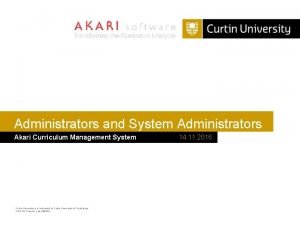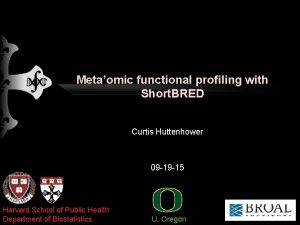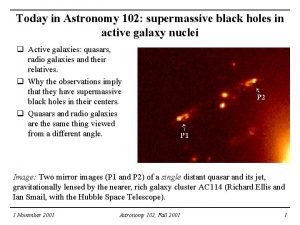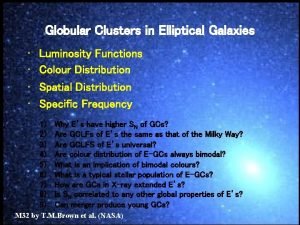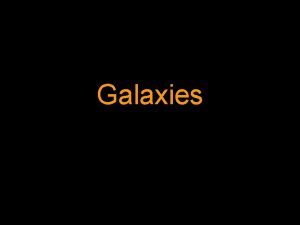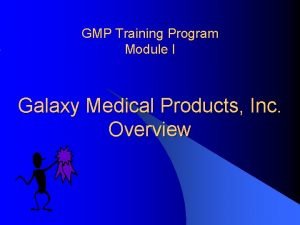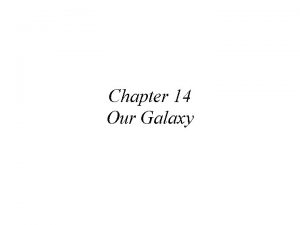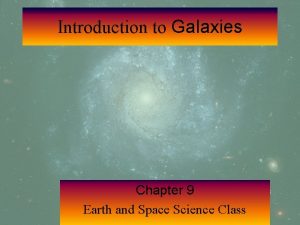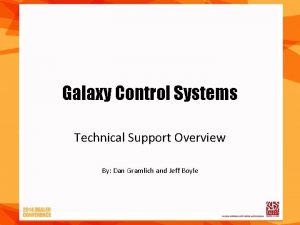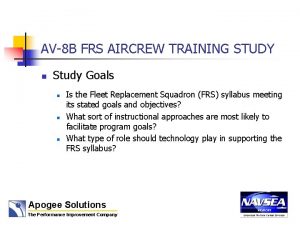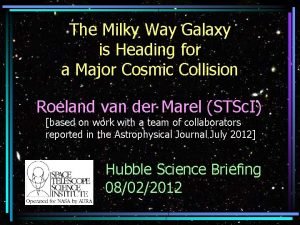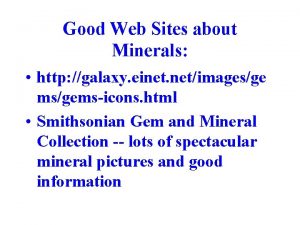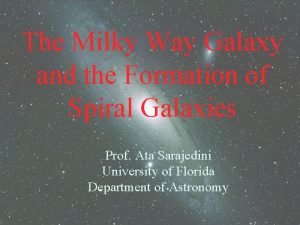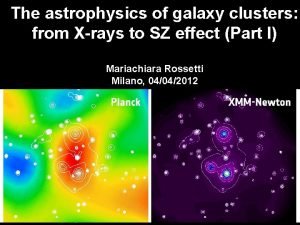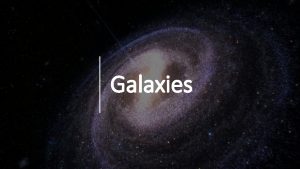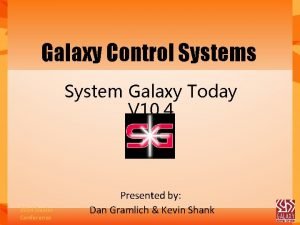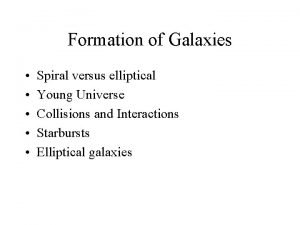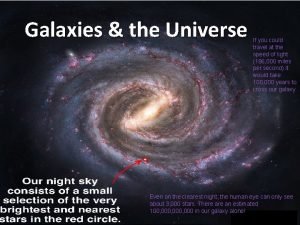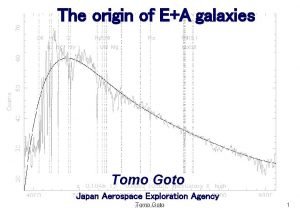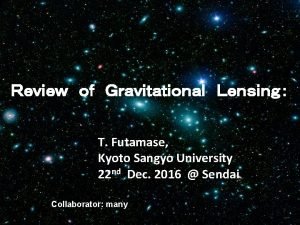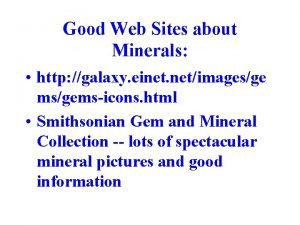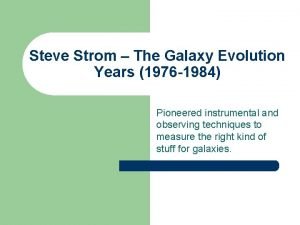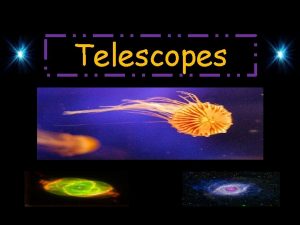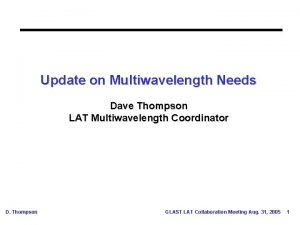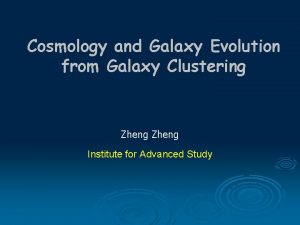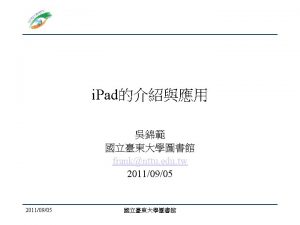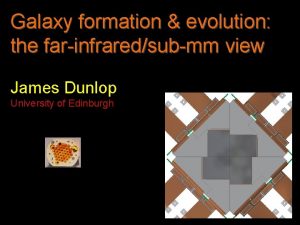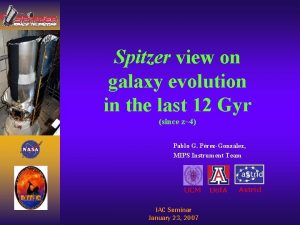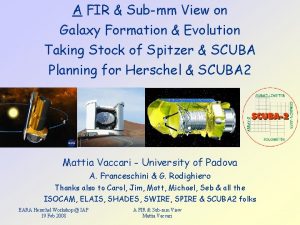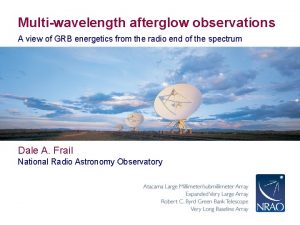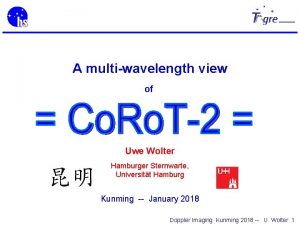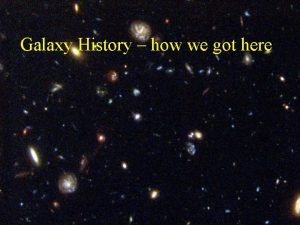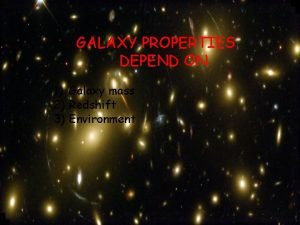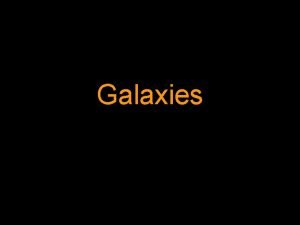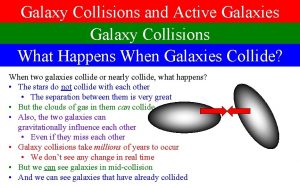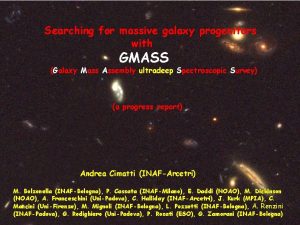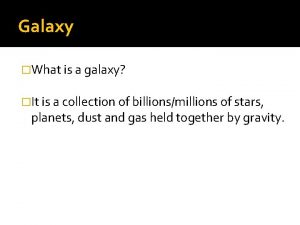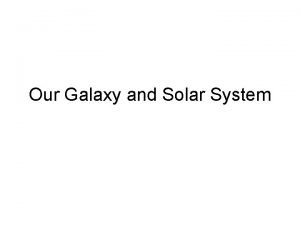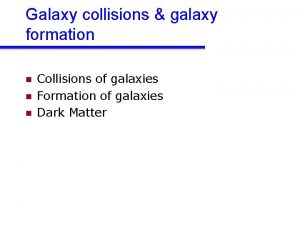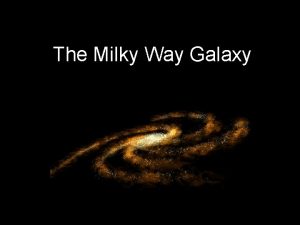A multiwavelength view of galaxy evolution with AKARI































- Slides: 31

A multi-wavelength view of galaxy evolution with AKARI Stephen Serjeant 29 th February 2012

A multi-wavelength view of galaxy evolution with AKARI Stephen Serjeant 29 th February 2012

Outline • XTENDED PS program of resolved galaxies – Old friends: M 31, Arp 220, M 82, NGC 253 etc – The Herschel Reference Survey – The JCMT Nearby Galaxies Survey • Bright galaxies in the Herschel ATLAS key project – Nearby galaxies (see also Chris Pearson’s talk) – Bright submm galaxies (see also Chris Sedgwick’s talk) and strong gravitational lenses • The link between Herschel and AKARI ultra-deep populations • The prospects for Herschel data in the NEP-Deep field

M 31 • 90μm: blue • 140μm: green • 160μm: red

M 81 / M 82 Credit: Chynoweth et al. , NRAO/AUI/NSF, Digital Sky Survey

M 81 / M 82

M 81 / M 82 • 90μm: blue • 140μm: green • 160μm: red

NGC 253 • 90μm: blue • 140μm: green • 160μm: red Image: CFH

IRAS F 10214+4724 • 60μm: blue • 90μm: green • 140μm: red Well, maybe ; )

Arp 220 • AKARI photometry shown in red • Aperture effect? • Or saturation? • Assume AKARI flux calibration correct in the following SEDs

Herschel Reference Survey • Volume-limited (15 -25 Mpc) and Ktot ≤ 12 (late-type) or Ktot ≤ 8. 7 (E, S 0, Sa) • Goals: e. g. census of cold dust along Hubble sequence; relation between dust emission and star formation; galaxy extinction; dust in ellipticals • Over 1/3 of the sample lack sensitive far-IR data (e. g. Spitzer, Herschel PACS) • The following are preliminary photometry from the AKARI all-sky survey diffuse maps; photometric errors probably underestimated

SPIRE Mdust = 5. 5× 107 M SEDs & SPIRE images courtesy of Matt Smith, Cardiff See Ciesla et al. in preparation

SPIRE Mdust = 7. 4× 107 M SEDs & SPIRE images courtesy of Matt Smith, Cardiff See Ciesla et al. in preparation

SPIRE Mdust = 3. 4× 107 M SEDs & SPIRE images courtesy of Matt Smith, Cardiff See Ciesla et al. in preparation

SPIRE Mdust = 6. 5× 107 M SEDs & SPIRE images courtesy of Matt Smith, Cardiff See Ciesla et al. in preparation

SPIRE Mdust = 8. 5× 107 M SEDs & SPIRE images courtesy of Matt Smith, Cardiff See Ciesla et al. in preparation

SPIRE Mdust = 8. 3× 107 M SEDs & SPIRE images courtesy of Matt Smith, Cardiff See Ciesla et al. in preparation

JCMT Nearby Galaxies Survey • Legacy Survey on the JCMT • Observations: sub-kpc resolved CO (J=3 -2) and continuum (450μm and 850μm) in 155 nearby galaxies • Sample: – SINGS (heterogenous selection) – HI-selected field galaxies – HI-selected Virgo cluster galaxies. • Goals: physical properties of dust; gas: dust ratio; effects of morphology and environment • SINGS has Spitzer & Herschel FIR data; Virgo sample has Herschel PACS from He. Vi. CS, but field sample lacks sensitive FIR data.

NGC 1156 • 140μm (Wide -L) 2’x 2’ shown • AKARI resolution can benefit photometry in higher cirrus regions

JCMT Nearby Galaxies Survey: FIR vs CO • LIRG/ULIRG • SMG • QSO • LBG • Spiral o Irregular • Peculiar / Wolf-Rayet Iono et al. 2009 & JCMT NGLS field sample NB the few heterogeneously-selected local galaxies in the Iono sample are not plotted • Extends nearly linear LFIR vs. LCO(3 -2) relation to ~5 orders of magnitude lower LFIR in homogeneously-selected local sample

JCMT Nearby Galaxies Survey: FIR vs CO • LIRG/ULIRG • SMG • QSO • LBG • Spiral o Irregular • Peculiar / Wolf-Rayet Iono et al. 2009 & JCMT NGLS field sample NB the few heterogenously-selected local galaxies in the Iono sample are not plotted • LFIR/LCO SFR/MCO Molecular gas depletion time ~3 Gyr

Herschel ATLAS • 550 deg 2 (1% of sky) at 110 -500μm to close to confusion limits at 250500μm • Largest open time key project on Herschel

Herschel ATLAS • UGC 4754 (Baes et al. 2010): radiative transfer models under-predict far. IR by ~× 2 • Suggests presence of highly obscured star formation that does not contribute significantly to global extinction • See also Chris Pearson’s talk for AKARI detections of H-ATLAS local galaxies

Herschel ATLAS • Bright Herschel population also a rich source of strong lenses – not every optical ID is physically associated with the far-IR • See Negrello et al. 2010 Science • Arises due to steep intrinsic high-z galaxy submm source counts

Herschel ATLAS • Bright Herschel population also a rich source of strong lenses – not every optical ID is physically associated with the far-IR • See Negrello et al. 2010 Science • Arises due to steep intrinsic high-z galaxy submm source counts HST SNAPs; Negrello et al. in prep


AKARI Abell 2218 Hopwood et al. 2010 Ap. JL 716, L 45

Link between Herschel & AKARI populations in Abell 2218 • Stack 15μm positions in Herschel maps Hopwood, Negrello, Serjeant 2012 MNRAS in preparation

Link between Herschel & AKARI populations in Abell 2218 • Stack 15μm positions in Herschel maps • Results: the 15μm population contributes 41%, 33%, 27% of the CIRB at 250μm, 350μm, 500μm (uncertainties dominated by ~5σ CIRB measurements) Hopwood, Negrello, Serjeant 2012 MNRAS in preparation

Prospects for NEP field • Herschel: OT 2 award (see Chris Pearson’s talk) • SCUBA-2: scheduled to observe NEP in UH time and remains a deep field in re-scoped JCMT Cosmology Legacy Survey • LOFAR: NEP in tier 2 of extragalactic wedding cake (50 hours per pointing) • Euclid (1. 2 m telescope launch in 2019): ~20 k deg 2 shallow survey & ~40 deg 2 of deep surveys (vis, Y, J, H to 26 -26. 5 mag 5σ) plus 1. 1 -2μm low-resolution spectra; Ecliptic Poles are the only deep fields guaranteed to be observed given orbit visibility constraints

Conclusions • Preliminary photometry in Herschel reference survey: dust masses for the HRS field sample • Preliminary photometry in JCMT Nearby Galaxies Legacy Survey: LFIR vs. LCO(3 -2) relation extended in homogeneously -selected sample to ~5 orders of magnitude lower LFIR; molecular gas depletion timescale ~3 Gyr • AKARI 15μm ultra-deep population contributes ~1/3 of submm background in Herschel SPIRE bands
 Elliptical, spiral and irregular.
Elliptical, spiral and irregular. Akari curtin
Akari curtin Akari curriculum
Akari curriculum Galaxy huttenhower
Galaxy huttenhower Radio galaxy
Radio galaxy Virtual galaxy
Virtual galaxy Ngc 2147 galaxy classification
Ngc 2147 galaxy classification What is the name
What is the name Our home galaxy
Our home galaxy Galaxy medical products
Galaxy medical products Disc filters galaxy 4 spin klin series
Disc filters galaxy 4 spin klin series Properties of elliptical galaxies
Properties of elliptical galaxies Why do disk stars bob up and down as they orbit the galaxy?
Why do disk stars bob up and down as they orbit the galaxy? Similar
Similar System galaxy tech support
System galaxy tech support Project wingman galaxy cbt
Project wingman galaxy cbt Milky way galaxy sketch
Milky way galaxy sketch Galazy.einet
Galazy.einet Canis major overdensity
Canis major overdensity Good morning galaxy
Good morning galaxy Galaxy clusters
Galaxy clusters Huge collections of stars
Huge collections of stars Galaxy control systems
Galaxy control systems Galaxy definition
Galaxy definition Article galaxy scholar
Article galaxy scholar Galaxy clusters
Galaxy clusters Cartwheel galaxy
Cartwheel galaxy Jupiler
Jupiler E+a galaxy
E+a galaxy Galaxy loght
Galaxy loght Galaxy.einet
Galaxy.einet Steve's galaxy (legacy)
Steve's galaxy (legacy)


